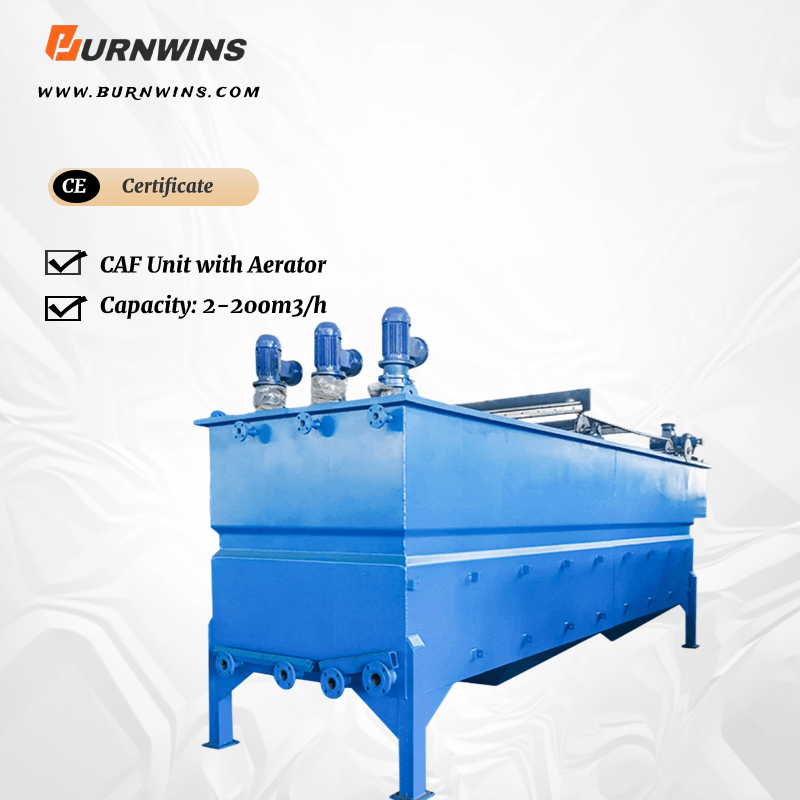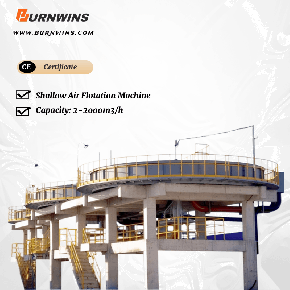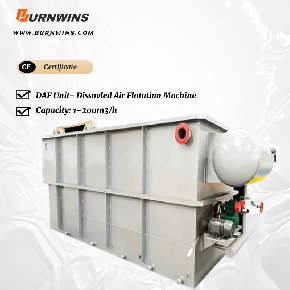CAF Unit Air Flotation Machine with Aerator
This CAFunit, is widely used as a pre-treatment machine for solid and liquid separation in the industrial wastewater treatment.
Introduction
The CAF (Cavitation Air Floatation) system is a patented water treatment equipment created by the world, and is also a recommended technology for export by the US Department of Commerce and the Environmental Protection Agency. CAF is a system designed specifically for the removal of oils, gels, and suspended solids (SS) from industrial and urban wastewater. For different types of wastewater, the oil removal rate is over 95%, and most of the solid suspended solids are also removed. By adding appropriate flocculants and mixers, COD and BOD can be removed by more than 60% in this pre-treatment stage. Moreover, the equipment investment is low, the operating cost is low, the work efficiency is high, and the operation and maintenance are simple. It is incomparable to all current air flotation technologies, including dissolved air flotation. Our company's latest developed new generation sewage treatment equipment, CAF series concave air flotation sewage treatment machine, can fulfill your dream of clean production, achieving a dual effect of recycling and treatment, and is the most ideal choice for meeting discharge standards.
Advantages
1. Save investment
The concave air flotation does not have equipment such as pressure vessels, air compressors, and circulation pumps, so the equipment investment is low.
The equipment occupies a small area, reducing civil engineering investment. The cavitation air flotation (CAF) equipment with a Q=200m3/h occupies an area of only 36.15m2.
2. Low operating costs
The system saves electricity consumption due to the lack of pressure vessels, air compressors, circulation pumps, and other equipment. The energy consumption of the Concave Air Flotation (CAF) system with Q=200m3/h is only 5.435KW, while the energy consumption of the Dissolved Air Flotation (DAF) system is as high as 65KW.
The Concave Air Floatation (CAF) system is very easy to operate and does not have complex equipment, so the workload of manual operation and maintenance is minimal, reducing labor and maintenance costs.
3. Significant processing effect
The removal rate of petroleum and solid suspended solids (SS) exceeds 80%.
The removal rate of BOD and COD can reach over 60%. The removal efficiency of dissolved air flotation (DAF) system for BOD and COD can only reach about 35%.
It can promote the oxidation of sulfides and reduce the sulfur content in wastewater.
4. Easy to operate
This system is very easy to operate and does not have complex equipment; The entire system consists of only two mechanical parts, unlike dissolved air flotation (DAF) systems which include many essential equipment such as pressure vessels, air compressors, and circulation pumps.
Operational principle
Untreated wastewater first enters the recycling machine for pretreatment, and is preliminarily purified through screening and filtration. The recovered fibers and by-products can be reused; The treated sewage is pumped or self flows to the air flotation machine, and appropriate flocculants are added for coagulation. A vortex aerator uses the high-speed rotation of the diffuser impeller at the bottom of the air delivery pipe to form a vacuum zone in water. The air on the liquid surface is sucked into the water, and micro bubbles are generated and spiral upwards, allowing oxygen in the air to enter the water. Due to the pressure imbalance between the gas water mixture and the liquid, a vertical upward buoyancy is generated, which brings the fiber suspension to the liquid surface. During the ascent process, microbubbles will attach to the suspended object. Upon reaching the liquid surface, the suspended object relies on these bubbles to support and maintain the liquid surface, and is removed by a radial airflow thrust.
The fiber suspended solids floating on the water surface are continuously removed by the scraper, which moves along the entire liquid surface and pushes the suspended solids from the inlet end of the air flotation tank to the outlet end. The collected sludge is then fed into the sludge treatment machine or directly recycled by the inclined metal plate into the spiral thruster. After purification, the sewage enters the overflow tank through the outlet below the metal before discharge. The overflow is used to control the water level of the air flotation tank to ensure that the liquid in the tank does not flow into the sludge discharge pipeline. The open reflux pipeline extends from the inflation section along the bottom of the air flotation tank, and the air flotation machine forms a negative pressure zone at the bottom of the pool with the reflux pipe. This negative pressure effect will cause sewage to reflux from the bottom of the pool to the inflation area, and then return to the air flotation section. This process ensures that air flotation continues even without flow.
Applicable scope
Widely used in paint, leather making, oil refining, printing and dyeing, chemical industry, dairy processing, fiber production, papermaking, food, beverage, slaughtering, textile, mechanical processing, municipal sewage and other sewage treatment.
INQUIRY
CATEGORIES
LATEST NEWS
CONTACT US
Contact: BURNWINS
Phone:
E-mail: info@burnwins.com
Whatsapp:+8619153235481
Add: No.7 Beiyuan Industrial Zone, Licang District, Qingdao City, Shandong Province, China



